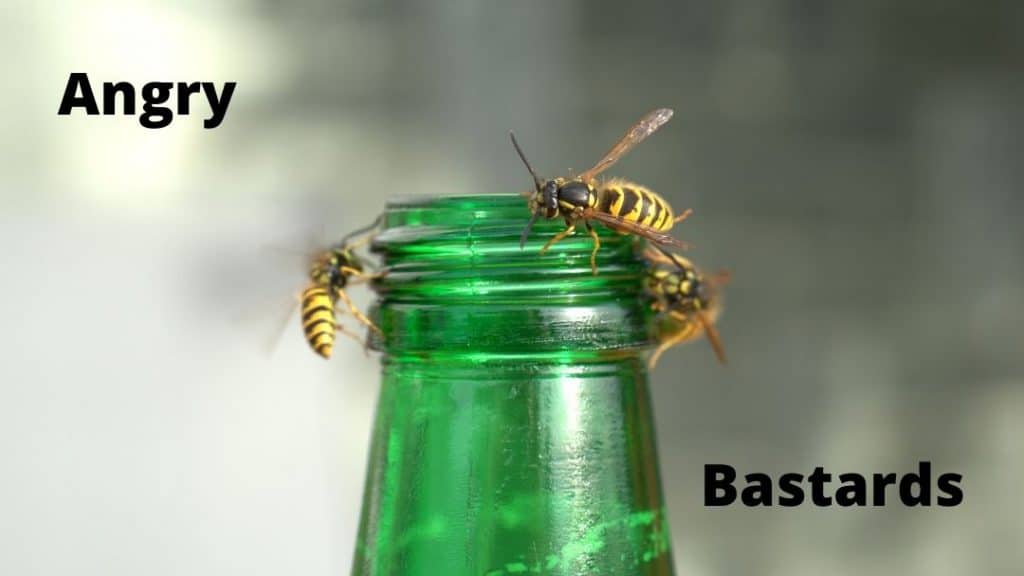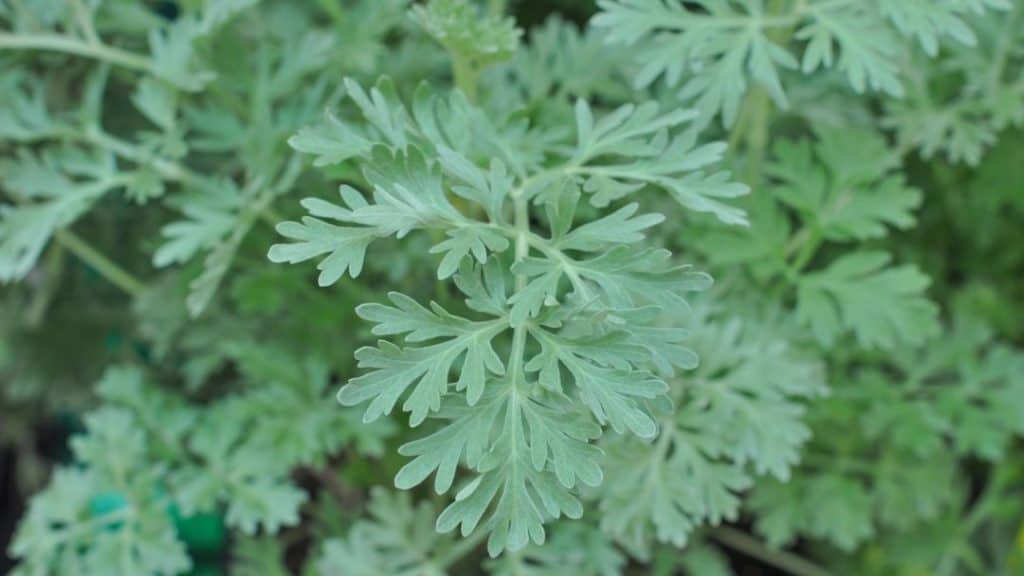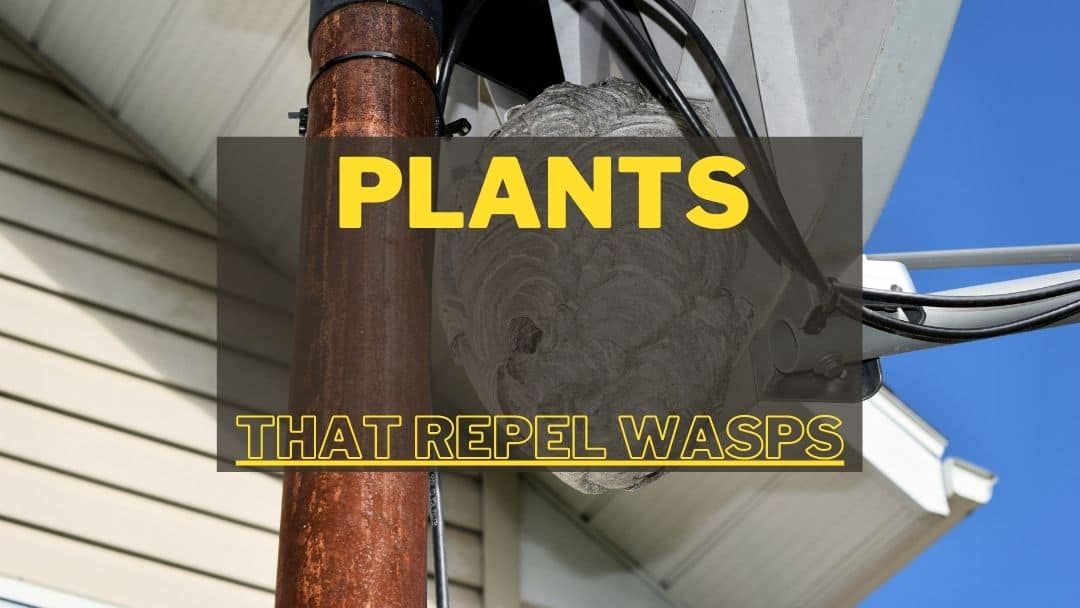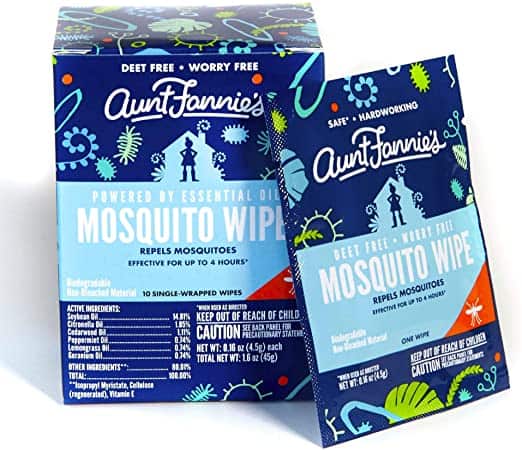Bee and Wasp Repellent Plants – Avoid Painful Stings this Summer
As beneficial as they’re both to the environment, wasps and bees can get out of control. Both sting and can go as far as to build a nests inside a vent in your soffit…I’ll share my personal experience with that later on in the article! If you have young children, they’re prone to getting stung when playing outdoors, and may be allergic to wasp stings. You won’t know for sure unless you get allergy testing done by a medical professional, and being without an EpiPen in a situation like this can be life or death…speaking from personal experience.
Wasps in particular have a very strong sense of taste and smell, as anyone whose ever worked a minimum-wage job and dealt with a trash can full of beer cans and leftovers outside in the summertime already knows. I worked at a golf course over a couple of summers in college, and it’s a miracle no one went to the hospital for Anaphylaxis. By they time those golf carts came back to us in the evening, they were swarming with insects!

Sorry…can’t help but point out how goofy and careless people get after 18 holes of golf and 12 cans of Miller Light!!!
Wasps are omnivores whereas bees are vegetarians, but they both love cheap beer, as I found out over those two summers in college. Wasps are the worst of the worst… They’re creepy carnivores with aggressive, streamlined features that inspire fear in anyone whose ever felt the sting of that sinister venom. A wasps’ dietary needs almost mirror our own, and even human body odor that disgusts us smells like fresh juicy meat to these flying monsters.
Yikes! 😖 I guess it’s Right Guard to the rescue before cutting my lawn this spring!
The main difference between wasps and bees is that bees lose their lives when they sting. Bees seem to be a bit more harmless in general and maybe that’s just a psychology thing, since we all love fresh honey on a breakfast pancake. A wasp on the other hand, can sting numerous times like a beast from hell. Wasps hibernate during the winter waiting to unleash their evil venom in the following year, while bees stay cozy and eat their saved up honey all winter like some wise old ant that outsmarted the grasshopper in a Bible story from an evangelical children’s church sermon in the rural south. Hallelujah!!! 😄
Wasps and bees are both members of the Hymenoptera order of insects though. In spite of their radical differences in appearance and behavior, they’ll both sting the living shit out of you when provoked.

Insect repellent sprays and pesticides are an easy method of pest control for both of these insects. They contain toxic chemicals harmful to both people and the environment though. Gross!!! And since an ounce of prevention is worth a pound or cure, we’re going to share some ideas with you today on keeping them both away from your home, without resorting to those nasty pesticides. That way, you’re less likely to be running away from your lawn mower screaming in agony this summer while the neighbors look on with their judgy stares and bewilderment. Let’s get started with our list of plants that repel wasps:
Using Plants and Herbs to Repel Wasps and Bees:
Placing plants around the perimeter of your house can be a good pest control method. It’s a more natural way to repel stinging insects, without killing them. The following plants have so many other advantages as well:
- Some plants are edible.
- A few of the plants, such as mint, have been used to treat minor medical conditions.
- Like all other plants, they help keep the air clean by releasing oxygen.
- They provide fresh scents to your yard.
- They help maintain your gardening work by providing an invisible fence around your flowerbeds or bushes.
Wormwood (Artemisia absinthium)
The absinthe in the Wormwood plant is very pungent to bees and wasps. It grows best in sunlight with well-drained soil. One word of caution about Wormwood, though. It’s chemical nature can stunt or prevent the growth of other plants. The good news, however, is that it’s also great for killing weeds. However, if you have pets and/or young children, it may not be the best one for you.

There’s a compound called thujone in this plant that can be toxic in very large doses, so don’t get the not-so bright idea to make homemade Absinthe… That would be dumb and unsafe, even though it’s the first thing that came to mind for many of us after reading this. Do use the wormwood plant to keep wasps away though. It can be planted in perimeter gardens and near the home to deter pest insects.
Tips for planting wormwood
- Wormwood should be planted after the last frost in the spring.
- Once it’s planted, it usually requires very little care. Occasional watering, pruning and an annual fertilization is all it needs.
- Foliage usually appears in the late spring and the plant usually blooms to its full two feet by late summer.
- Some varieties, such as sweet Annie, re-seeds itself every year. As a result, they need to be collected as often as possible.
Cucumbers (Cucumis sativus)
Believe it or not, the peel of one of the top favorite salad vegetables contains an acid that’s bitter to both bees and wasps. Even just leaving fresh peels around in your garden is often enough to keep them away. However, if you want to plant them, cucumbers are tropical and thrive in moisturized earth.

Tips for planting cucumbers in your garden
-If you’re going to use your cucumbers for food, don’t let them get super large or they’ll taste bitter. They take about six weeks to ripen from the time that they’re planted.
-There are two types-vining and bush. The vining ones do best on vines shaded with leaves. They do best on a trellis or fence rather than directly from the ground. The bush types, on the other hand, are best for pots and small gardens. Either one will help repel a wasp.
Basil (Ocimum basilicum)
We humans absolutely love basil for flavoring. However, the aroma repels bees and wasps. Basil does best in warm climates that have between six and eight hours of sunlight a day. They grow best in moist ground but it needs to be kept well-drained to avoid drowning the root system and leaves.
Tips for planting basil to deter wasps
- Even though it needs a lot of sunlight, Basil actually does better in a slight amount of shade. Too much direct sunlight can burn the leaves.
- Water to about ten percent of the pot. Enough to keep it moisturized but not enough to drown the roots. Besides rotting, it can also lead to mold.
- Trim the flowers as soon as they bloom. With the Basil plant, they can hinder further growth. Same with too many old leaves.
Mint (Mentha)
We humans appreciate mint for flavor and as a breathe refreshment. Peppermint oil in particular can also be very helpful in alleviating both wasps’ and bees’ stings. However, the scent of these herbs seems to repel wasps, bees and other stinging insects well. Mint is a very fast-growing green plant. It does require a lot of monitoring as you’ll find that it can put a choke-hold on other plants in your yard.
Tips for planting
- Mint prefers well-drained earth in partial shade.
- It’s best to keep seedlings 18-24 inches apart so they don’t choke each other.
- Transplant your mint between three and four years for the best scent.
- If you’re planting in the ground, dig a hole about a foot deep, line your landscaping fabric, refill the hole and then plant the seeds. However, mint can be sneaky so watch for feelers trying to creep on top of the landscape fabric.
Marigolds (Tagetes Patulla)
These beautiful flowers are natural wasp deterrents. However, they do require pollination to survive and don’t keep honeybees away. Marigolds are very adaptive to either pots or the ground and require very little care.
Tips for planting
- Sow these natural wasp repellent plants seeds as soon as all risks of frost has passed. They need to be planted under full sun. However, some afternoon shade may be beneficial under extreme heat.
- Sow them about an inch deep to keep the seeds and roots from being a pest to each other. Be sure to water them very thoroughly after you do. The plants grow up to four feet tall and produce some beautiful flowers.
- The plant should bloom within about eight weeks’ time. So if you can afford to wait to repel wasps around your home for that long, Marigolds are definitely the most ideal plant for you.
- They can be planted in pots. However, the expert says to space them well as they can easily overcrowd and choke each other.
Geraniums (Pelergonium)
What makes Geraniums an ironic flowering plant is that they contain little to no pollen and have an aroma that repels wasps and bees. Particularly red ones do so, as bees also can’t see the color red.
Tips for planting
- Geranium plants prefer areas with little to no fertilizer. They need basic loose and organic ground.
- The area should be well-drained with morning sun and afternoon shade.
- Add light fertilizer-about two tablespoons of 20-20-20 into a gallon of water. If you keep adding more, the leaves will grow more than the flowers. That’s not what you want if you’re using them as wasp and bee deterrents.
- Geranium plants also grow well in pots. However, be sure your earth is well-drained and you fertilize it lightly.
- Be sure to water them regularly. Unfortunately, Geraniums are rather unpredictable as to how much water they can control. As a result, you will need to keep a careful eye on your plant.
Vibrant Green Foliage – Eucalyptus (Eucalyptus Globulous)
Eucalyptus may be heavenly to Koala bears but not so much to bees and wasps. It can be planted into pots or directly into the ground. One advantage with Eucalyptus is that it’s drought tolerant so, depending on your current climate, make sure to give it plenty of time between watering. Eucalyptus oil is very effective for fending off all kinds of pest insects as well as treating superficial wounds.
Tips for planting
- You will need to plan ahead as eucalyptus plants are slow growers, they take about two months to bloom. You will need to plant them after the last frost.
- The soil needs to be well-drained or used potted soil if you’re growing your plant in a pot. Eucalyptus plants need to be in peat pots to prevent transplant shock.
- Eucalyptus plants thrive best in full sunlight.
- Control your watering so that the leaves wilt just slightly but never let them shrivel completely.
Pennyroyal (Mentha Pulegium)
Pennyroyal has an aroma similar to mint, so it’s repellent to both wasps and bees. Pennyroyal is a small plant that grows up to 12 inches in height. As long as it’s kept well watered, it’s very easy to grow.
Tips for planting
- Pennyroyal plants thrive best in full sun after the last frost in a proper seed bed.
- The seed is best planted on the surface of the soil and then misted.
- There are two kinds of the plant-American and European. The difference is that the first can be grown indoors on a trough. The European plant can be grown in a basket or a container edge.
- One advantage is that they can grow in junky soil and be used for erosion control.
- Some reported medical advantages is that it can assist in relieving gastrointestinal pain, menstrual issues and colds.
Citronella (Cymbopogon Nardus)
Aside from repelling mosquitoes, this natural pest control grassy plant also keeps wasps and bees away. It needs at least six hours of sunlight and can be placed next to a window. The soil needs to be kept well drained to prevent drowning.
Tips for planting
- Like just about every other wasp and bees repellent plant mentioned above, Citronella is best planted after the last frost.
- The grassy herb plant is best planted 18 to 24 inches apart in well-fertilized soil. The expert says it’s best to mix in aged compost or other organic matter.
- If your plants bloom abundantly, feed them a water soluble food on a regular basis to keep mosquitoes away.
Red Wasps in Our Attic!
As promised, here’s my personal experience on having to resort to pesticides. When we first moved into our home there was some damage to the siding near our attic. It turns out, this had been there for a while and there was a basketball sized red wasp nest up there in the rafters! If you have cedar siding on your home, be extra careful to have someone regularly inspect your home’s siding for damage. They seemed to be using our siding to make paper for their nest in the attic! We eventually replaced it with vinyl and had someone come out to empty 4 cans of wasp freeze on the entry to their nest! Nightmare over…at least until those damn murder hornets show up in our area. Is 2020 over yet??? 😓🙏🤣
Conclusion:
Wasps can be troublesome and many of us are allergic to their sting. While it may be necessary to rely on chemical pest control sprays to prevent injury to you or your family, you can take action to make the area around your home less inviting to them. Many of these plants that repel them also work to keep other insects away too. Check out these related articles in this series for more info on plants that keep those creepy crawlers away:
- Related Post: Plants that Repel Flies
- Related Post: Plants that Repel Spiders
- Related Post: Plants that Repel Ants
- Related Post: Plants that Repel Mosquitoes







